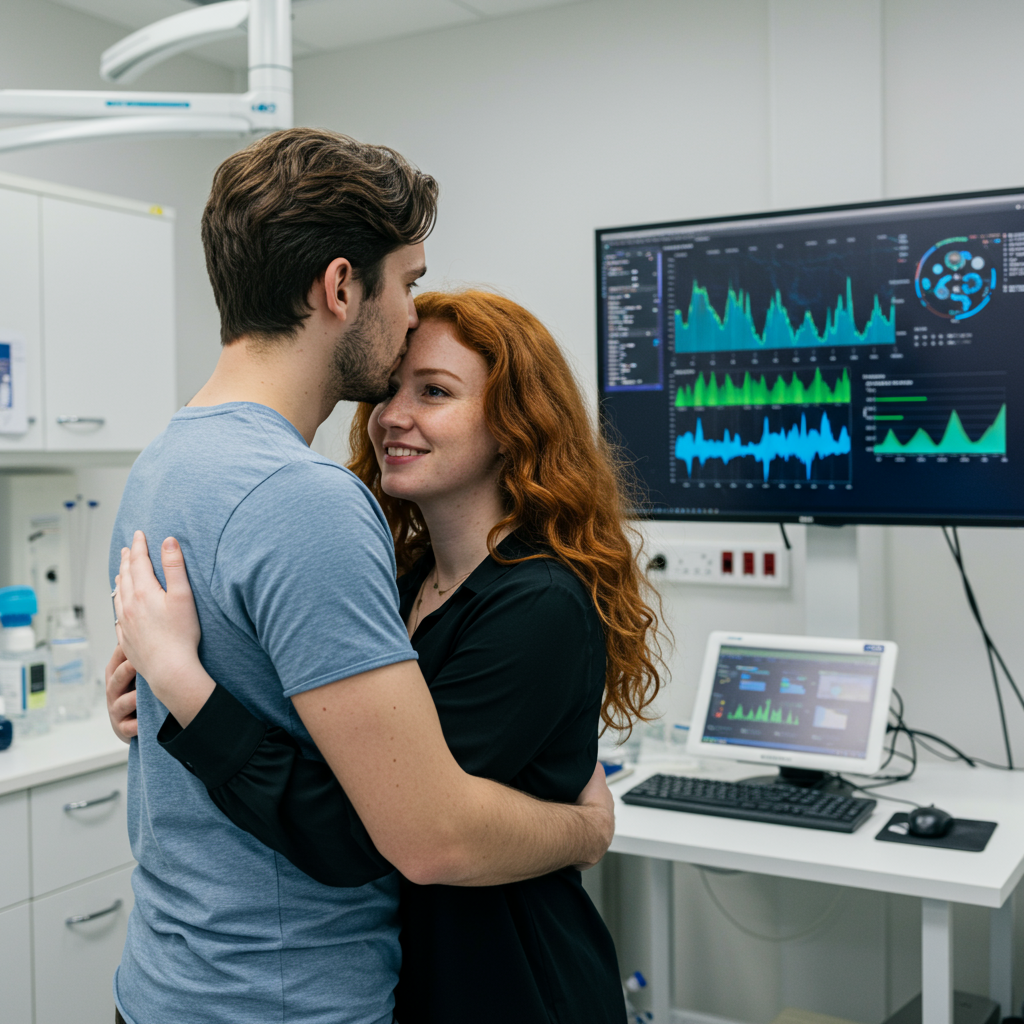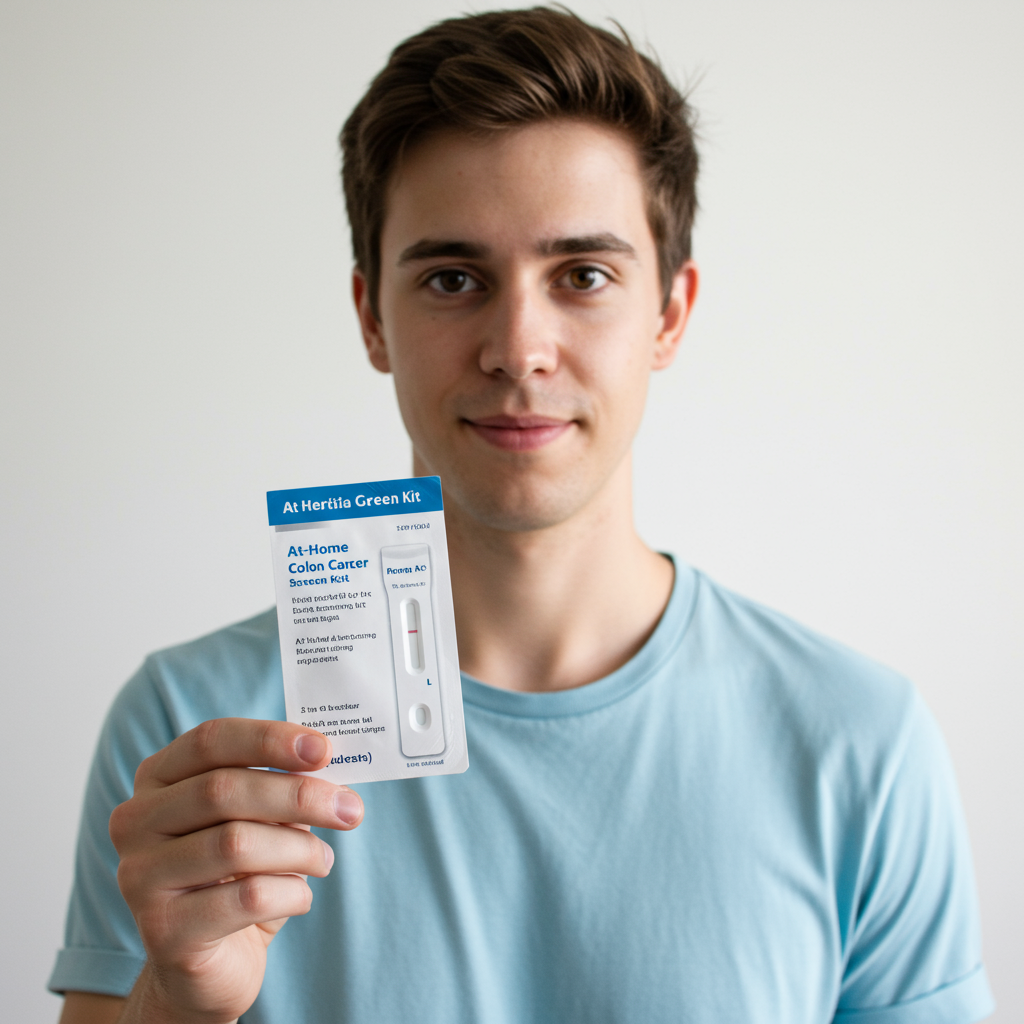After nearly two decades of trying, including numerous heartbreaking attempts at in vitro fertilization (IVF), a couple has achieved a successful pregnancy thanks to a pioneering application of artificial intelligence. This breakthrough offers immense hope, particularly for those facing the most challenging forms of male infertility. Developed at Columbia University, the innovative STAR (sperm Track and Recovery) method uses advanced AI to locate rare, viable sperm cells that traditional methods often miss entirely.
For 18 years, this couple navigated the emotional and physical toll of infertility. Their journey included 15 failed rounds of IVF, a testament to the severe obstacles they faced. The primary challenge stemmed from the husband’s diagnosis of azoospermia, a condition where there are few or no detectable sperm in the semen sample. This rare form of male infertility affects approximately 1% of infertile men and can make conception through conventional means incredibly difficult, if not impossible. While infertility is sometimes mistakenly viewed as solely a female issue, male factors contribute to as many as 50% of cases where couples struggle to conceive.
Understanding Severe Male Factor Infertility
Male infertility encompasses a range of issues, from low sperm count and poor motility to abnormal shape. However, azoospermia represents a particularly severe form. In typical semen samples, millions of sperm are present, making them relatively easy to find under a microscope for IVF or other assisted reproductive technologies. With azoospermia, the count is critically low – sometimes zero – or the sperm are simply not visible or mobile enough to be found with standard techniques. This often leaves couples with limited options beyond donor sperm or complex surgical procedures to attempt retrieval from testicular tissue.
The Long and Difficult Path to Parenthood
This anonymous couple had explored various possibilities over their nearly two-decade journey. They considered surgical options and other potential treatments but continued to face setbacks. Their experience underscores the profound resilience required when battling long-term infertility. Each failed IVF cycle brings disappointment and forces couples to re-evaluate their path forward. Discovering the STAR method at the Columbia University fertility Center presented a new, previously unimaginable possibility.
Introducing STAR: AI’s Game-Changing Fertility Tool
The STAR system is a significant advancement in fertility technology. It was developed over five years by Dr. Zev Williams, the director of Columbia’s fertility clinic, and his dedicated team. The core of STAR is an AI algorithm combined with a specialized fluidic chip and high-powered imaging. Unlike a human embryologist manually searching a semen sample, which is laborious and can easily miss extremely rare cells, the AI system is designed for speed and precision on a microscopic level. Its specific purpose is to efficiently scan semen samples from men with severe conditions like azoospermia and accurately identify living sperm cells.
How the STAR System Works
The technical process behind STAR is impressive. A semen sample is placed onto a custom-designed chip. This chip is then examined under a microscope equipped with high-speed cameras and advanced imaging technology. The system proceeds to scan the entire sample, capturing a massive number of images – over eight million in less than an hour, according to reports.
The AI algorithm, which has been extensively trained to recognize the unique characteristics of sperm cells, then processes these millions of images. It can rapidly analyze the visual data to pinpoint the location of individual sperm. A key advantage is its ability to detect sperm even if they are not highly motile or are present in incredibly low numbers that would be missed by the human eye during a limited manual search. Once identified, the system can even isolate the detected sperm into a tiny droplet of media, making it far easier for embryologists to collect the scarce, viable cells.
Demonstrating AI’s Superior Sperm Detection
The power of the STAR system is best illustrated by a direct comparison to traditional methods. Dr. Williams shared a compelling example: in one test case, experienced embryologists spent two full days manually searching a semen sample from a man with azoospermia but found no viable sperm. When that very same sample was run through the AI-powered STAR system, it located a remarkable 44 sperm cells in just one hour. This stark difference highlights the AI’s unparalleled efficiency and capability in finding what human technicians cannot, especially when sperm are exceedingly rare. Dr. Williams described realizing the technology’s potential as a “game-changer.”
A New Hope Becomes Reality: The First STAR Pregnancy
For the couple who had tried for 18 years, STAR offered a final avenue of hope. Using the AI system, the team at Columbia was able to detect not millions or thousands, but just three viable sperm in the husband’s sample. These three incredibly precious cells were then used in an IVF procedure to fertilize one of his wife’s eggs. The resulting embryo was successfully transferred to her uterus, leading to a confirmed pregnancy in March.
The mother’s reaction reflects the long and arduous journey they had endured. She told CNN that it took her “two days to believe I was actually pregnant” after receiving the positive test result, a sentiment underscoring the years of disappointment that made the news feel surreal. This case marks the first known successful conception achieved specifically through the use of this AI-powered STAR method for severe male infertility.
Looking Ahead: Availability and the Future
Currently, the Columbia University Fertility Center is the only location where the STAR technology is available to patients. However, Dr. Williams and his colleagues recognize the immense potential and the widespread need for this technology. They plan to publish their research findings, with the goal of making the STAR method accessible to other fertility clinics in the future. This would significantly expand access for couples worldwide facing similar severe male factor infertility challenges. While specific costs can vary, initial reports suggest the estimated cost for using the STAR system to find, isolate, and freeze sperm might be under $3,000.
Broader Applications of AI in Assisted Reproduction
The successful application of AI in finding sperm with the STAR method is part of a larger trend of integrating artificial intelligence into assisted reproductive technologies. AI is already being used in other areas of IVF, such as:
Embryo Selection: Algorithms analyze images of developing embryos to predict which ones are most likely to result in a successful pregnancy, helping embryologists choose the best candidates for transfer.
Egg Quality Assessment: Tools like Columbia’s own CHLOE system utilize AI to evaluate the quality of a woman’s eggs before freezing, providing valuable information for future fertility planning.
These advancements demonstrate the growing role of AI in optimizing fertility treatments and improving success rates across various stages of the process.
Frequently Asked Questions
What is the STAR method and how does it help with severe male infertility?
The STAR (Sperm Track and Recovery) method is a novel AI-powered technology developed at Columbia University Fertility Center. It is specifically designed to find viable sperm in semen samples from men diagnosed with azoospermia, a condition characterized by extremely low or undetectable sperm counts. Unlike traditional manual methods, STAR uses advanced imaging and an AI algorithm to scan millions of images rapidly, identifying and isolating rare sperm cells that human technicians often miss. This makes it possible to use these precious few sperm for IVF, offering hope where conventional treatments have failed.
Where is the STAR AI fertility treatment currently available?
As of now, the STAR method for sperm detection using AI is exclusively available at the Columbia University Fertility Center in New York. Its developers, led by Dr. Zev Williams, are working towards publishing their research. Their goal is to make this groundbreaking technology accessible to other fertility clinics in the future, thereby expanding its availability to more couples globally who are struggling with severe male factor infertility, including azoospermia.
How does the AI system find sperm when traditional manual methods cannot?
The AI system in the STAR method excels where manual searches struggle due to its speed, precision, and ability to analyze vast amounts of data. It uses a specialized chip, high-speed cameras, and advanced imaging to capture millions of microscopic images from a semen sample (over 8 million images in under an hour). An AI algorithm trained to recognize sperm then processes these images, quickly identifying cells that might be non-motile, oddly shaped, or simply too rare to be reliably found by a human embryologist manually scanning under a microscope for a limited time. This allows it to detect even just a handful of viable sperm in samples previously deemed sperm-free.
A New Horizon for Fertility Treatment
The successful pregnancy achieved through the STAR method represents a monumental step forward in fertility treatment. It provides a powerful new tool for couples facing the profound challenges of severe male infertility, particularly azoospermia, who have exhausted other options. The ability of AI to find even the rarest of viable sperm cells opens doors that were previously closed, turning years of disappointment into a tangible possibility for parenthood. As this technology becomes more widely available, it promises to transform the landscape of reproductive medicine, offering renewed hope and brighter futures for countless families worldwide. This case is a vivid illustration of how artificial intelligence can be harnessed to overcome some of medicine’s most complex challenges.



